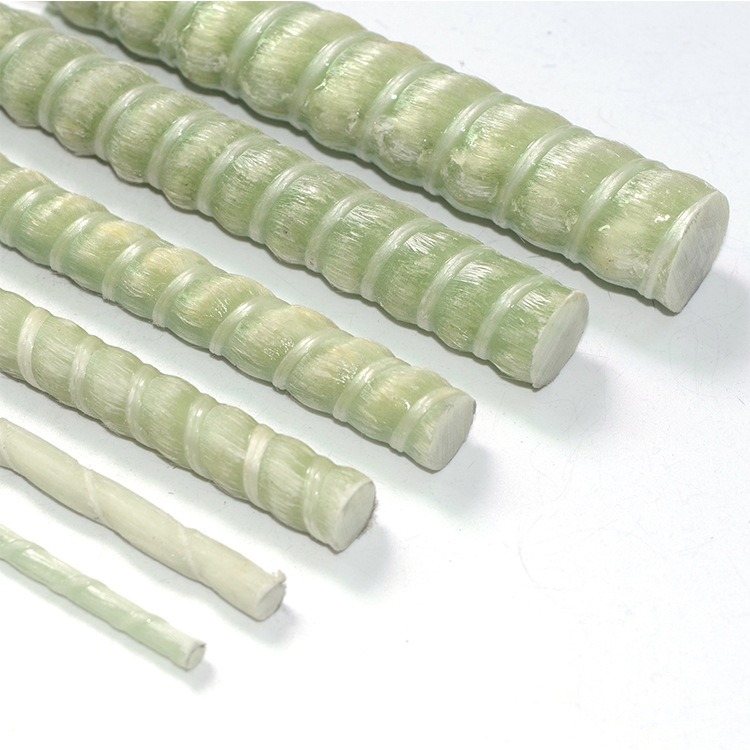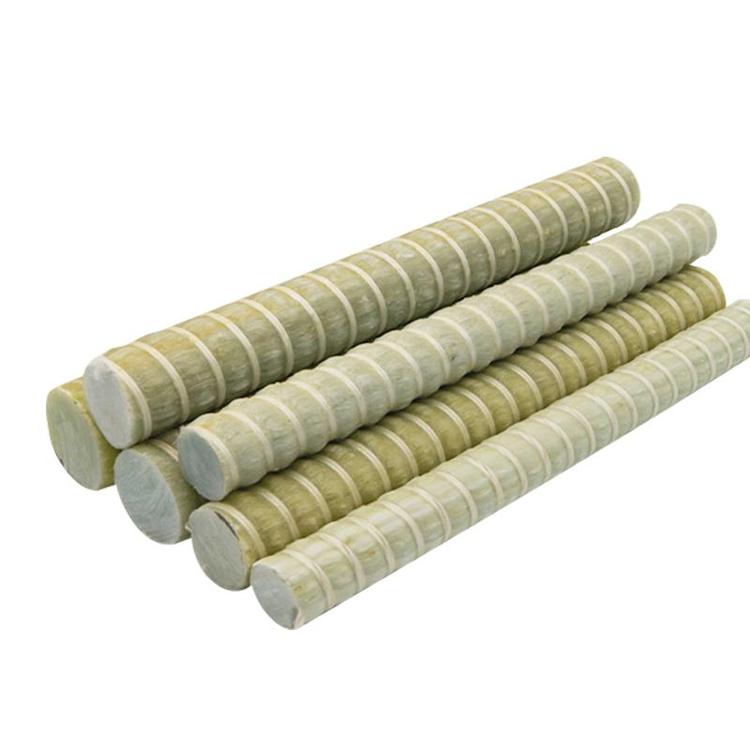Introduction
In the ever-evolving construction industry, the need for innovative materials that offer superior performance and sustainability is paramount. One such material that has gained significant attention is the Glass Fiber Reinforced Polymer (GFRP) insulation connector. The GFRP Insulation Connector is revolutionizing the way we approach thermal insulation and structural integrity in building construction. This article explores the advantages of GFRP insulation connectors and their impact on modern construction practices.
Thermal Efficiency Enhancement
One of the primary benefits of using GFRP insulation connectors is their exceptional thermal performance. Traditional metallic connectors often create thermal bridges, which can lead to significant energy losses. GFRP connectors, however, have low thermal conductivity, effectively minimizing heat transfer between the interior and exterior of a building. This enhancement in thermal efficiency contributes to reduced energy consumption for heating and cooling, aligning with global sustainability goals.
Reduction of Thermal Bridges
Thermal bridges occur when there is a direct connection through materials that are poor insulators, allowing heat to bypass the insulation layer. GFRP insulation connectors disrupt this pathway due to their insulating properties. Studies have shown that buildings utilizing GFRP connectors experience a significant reduction in thermal bridging, leading to improved indoor comfort and lower utility bills.
Structural Integrity and Durability
Beyond thermal advantages, GFRP insulation connectors contribute to the structural integrity of construction projects. They offer high tensile strength and are resistant to corrosion, making them ideal for long-term applications. The non-corrosive nature of GFRP ensures that the connectors maintain their performance over time, even in harsh environmental conditions.
Resistance to Environmental Factors
GFRP materials are impervious to moisture and chemical exposure, which can degrade traditional metal connectors. This resistance extends the lifespan of the connectors and reduces maintenance costs. For structures exposed to marine environments or industrial pollutants, GFRP insulation connectors provide a reliable solution that maintains structural performance.
Lightweight and Easy Installation
The lightweight nature of GFRP insulation connectors simplifies the installation process. They are easier to handle on-site, reducing labor costs and installation time. Moreover, their ease of use does not compromise strength, as GFRP connectors possess a high strength-to-weight ratio compared to traditional materials.
Improved Construction Efficiency
Efficiency in construction is crucial for meeting project deadlines and budgets. GFRP connectors contribute to this efficiency by enabling faster assembly without the need for heavy lifting equipment. This advantage is particularly beneficial in modular construction, where components are prefabricated and assembled on-site.
Electromagnetic Transparency
Unlike metal connectors, GFRP insulation connectors are non-conductive and do not interfere with electromagnetic fields. This property is essential in buildings where electromagnetic interference (EMI) can affect sensitive equipment, such as hospitals, laboratories, and data centers.
Applications in Specialized Environments
In facilities that require strict control over electromagnetic conditions, the use of GFRP connectors ensures compliance with technical requirements. They enable architects and engineers to design spaces without the limitations imposed by metal components, enhancing both functionality and safety.
Sustainability and Environmental Impact
Sustainability is a growing concern in construction, and GFRP insulation connectors contribute positively by reducing energy consumption and utilizing eco-friendly materials. The production of GFRP has a lower carbon footprint compared to traditional metals, and the enhanced thermal performance leads to energy-efficient buildings.
Contributing to Green Building Standards
Buildings that incorporate GFRP connectors are better positioned to achieve green building certifications such as LEED and BREEAM. These connectors support initiatives for sustainable design by promoting energy efficiency, reducing material waste, and enhancing indoor environmental quality.
Cost-Effectiveness Over Lifecycle
While the initial cost of GFRP insulation connectors may be higher than traditional materials, the long-term savings are substantial. The durability and low maintenance requirements reduce overall lifecycle costs. Additionally, energy savings from improved thermal performance contribute to cost-effectiveness.
Return on Investment Analysis
Cost analyses indicate that buildings using GFRP connectors recoup the initial investment through reduced energy bills and maintenance expenses. For developers and owners, this return on investment is a compelling reason to adopt GFRP technology.
Versatility in Design Applications
GFRP insulation connectors are versatile and can be customized for various design requirements. Their adaptability allows for integration into different structural systems, including curtain walls, sandwich panels, and insulated facades.
Customization and Fabrication Flexibility
Manufacturers can produce GFRP connectors in various shapes and sizes to meet specific project needs. This customization enhances architectural creativity and enables the realization of complex designs without compromising structural performance.
Compliance with Building Codes and Standards
GFRP insulation connectors comply with international building codes and standards. Their performance characteristics meet the rigorous requirements for structural safety, fire resistance, and thermal performance.
Certification and Testing
Extensive testing has validated the reliability of GFRP connectors. Certifications from recognized bodies provide assurance to engineers and builders of their suitability for various applications. Compliance simplifies the approval process for construction projects.
Case Studies and Real-World Applications
Several construction projects worldwide have successfully implemented GFRP insulation connectors. These case studies demonstrate the practical benefits and effectiveness of GFRP in enhancing building performance.
Notable Projects Utilizing GFRP
From high-rise buildings to industrial facilities, GFRP connectors have been employed to address specific challenges. For instance, in coastal structures where corrosion resistance is crucial, GFRP has proven to be an invaluable material.
Integration with Other GFRP Products
GFRP insulation connectors can be integrated with other GFRP products, such as rebar and structural profiles, to create a comprehensive composite system. This integration enhances overall performance and streamlines the supply chain.
Unified Composite Solutions
Using a unified GFRP system reduces material incompatibility issues and simplifies construction processes. It allows for consistent material properties throughout the structure, enhancing predictability and reliability.
Challenges and Considerations
While GFRP insulation connectors offer numerous advantages, certain challenges must be addressed. These include initial material costs, availability, and the need for specialized training for installation.
Overcoming Adoption Barriers
Education and awareness are key to overcoming these barriers. Demonstrating the long-term benefits and providing training can facilitate wider adoption of GFRP technology in the construction industry.
Future Outlook and Innovations
The future of GFRP insulation connectors is promising, with ongoing research focusing on enhancing material properties and expanding applications. Innovations in manufacturing processes are expected to reduce costs and improve performance.
Advancements in Composite Materials
New composite formulations and production techniques are being developed to further improve the mechanical and thermal properties of GFRP connectors. These advancements will likely lead to broader use in various construction sectors.
Conclusion
GFRP insulation connectors represent a significant advancement in construction materials, offering numerous benefits over traditional connectors. Their ability to enhance thermal efficiency, structural integrity, and sustainability makes them an attractive option for modern building projects. As the industry continues to prioritize energy efficiency and durability, the role of GFRP Insulation Connector is poised to become increasingly important. Embracing this technology can lead to better-performing buildings and contribute to the overall advancement of construction practices.



























